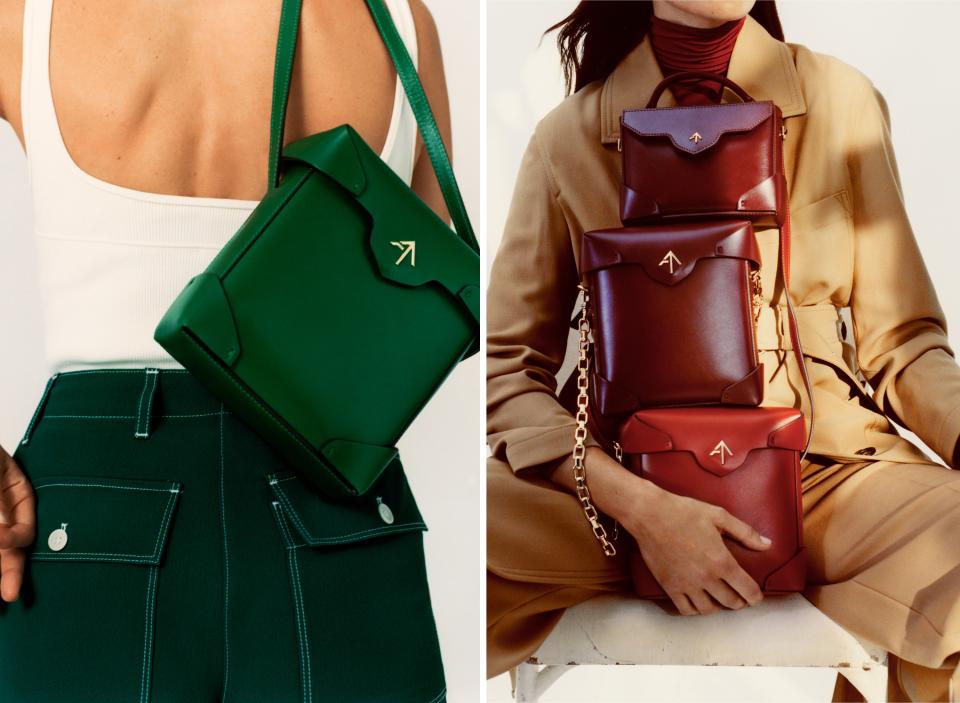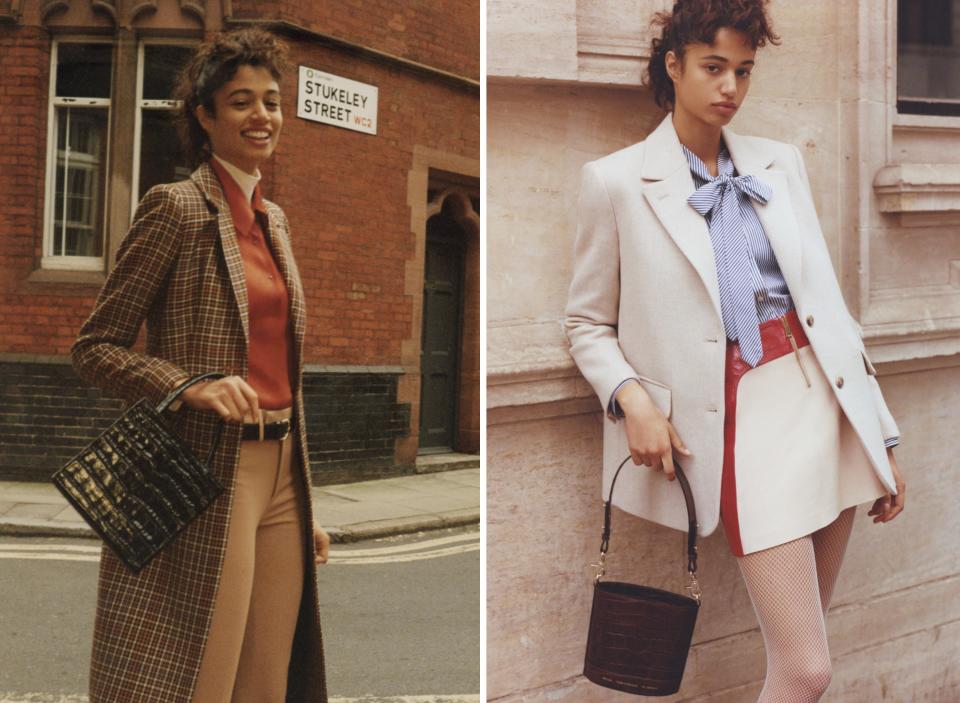The Fall Handbags on Vogue Editors’ Wish Lists Aren’t What You Expect
If you asked me which item in my closet gets the most compliments from friends, or the most “Where did you get that?” questions from complete strangers, the answer might surprise you. No, it isn’t a priceless heirloom or a designer piece I saved up for, or that must-have, sold-out-everywhere It item you recognize from the pages of Vogue. It’s a croc-embossed black mini bag by Bulgarian label By Far, with a cute top handle and crossbody strap, that retails for $560. I have it slung over my shoulder almost every day, packed with only the essentials: phone, card case, lip balm, keys. It’s so petite I often forget it’s there—until someone stops me on the street to ask about it.
Who would have guessed a little black bag would get so much attention? It’s neither flashy nor as jaw-droppingly tiny as, say, the new Jacquemus bag, and it isn’t by a well-known label. During New York Fashion Week, it even caught the eye of Vogue’s creative director, Sally Singer, who was carrying her own covetable accessory: a chocolate brown mock-croc bag by the Polish label Chylak, which retails for under $400. (Two minutes later, our colleague Alexandra Michler arrived wearing a pair of lace-up boots by—who else?—By Far.)
We quickly realized the two brands had a lot in common: luxe materials, excellent prices, and, more surprisingly, Eastern European provenance. The accessories market is dominated by luxury houses based in Italy and France, but the new labels we’re into are happily off the grid. Just south of By Far’s headquarters in Sofia, Bulgaria, is another on-the-rise label, Manu Atelier, designed by sisters Merve and Beste Manastir, who are based in Istanbul. They see their unexpected address as both a strength and a way to stand out in a crowded market. “There aren’t many local retailers or fashion buyers and press [here], so Instagram has really been helpful for us to show our brand to the world,” they explained. “Turkey has always been a production hub with really good quality materials and craftsmanship for many luxury brands. And we grew up in the middle of many cultures and witnessed their beauty. The mix of cultures here always inspires us.”

The label’s signature Pristine bag retails for around $500, depending on size and material. One way the Manastirs have maintained such a competitive price point is by working closely with their father, who’s been in the leather business for decades; instead of shipping their bags all over the world to be produced, they’re made in-house by their own team of artisans. Similarly, Zofia Chylak produces her bags locally in Poland using Italian-sourced leather and has a similar advantage of very few local competitors. “When I started the brand in 2014, there were practically no internationally known Polish brands,” she told Vogue. “I wanted to create a bag that was elegant, versatile, and timeless yet affordable. We worked closely with our [manufacturing] partners to make sure the bags matched the quality of the accessories produced in France or Italy, which was a challenge, of course.” Even as her business scaled, she was able to keep the prices in the $350 range—which might explain why sales have tripled every year and why some bags have generated wait lists in the thousands. The key is that they look and feel much more expensive than they are, free of obnoxious logos and clunky hardware. “As a new brand from a country not traditionally associated with fashion, I wanted to make sure the focus was on the product,” she added.
You could say By Far has taken off for similar reasons: high-end design coupled with wallet-friendly prices and the sense of luxe anonymity popularized by Phoebe Philo at Céline. When By Far launched in 2016 with a small capsule of shoes made in Bulgaria with deadstock leather, founders Valentina Bezuhanova, Sabina Gyosheva, and Denitsa Bumbarova told Vogue they had wanted “shoes that are really easy to wear but also elegant enough for night and not overpowering.” It’s a delicate balance they’ve managed to stick to and one that women all over the world are gravitating towards: Purchases on By Far’s e-commerce site have tripled every quarter.

That swift success has given the By Far team a little room to experiment. The neutrals and clean lines of their early collections have evolved to include new colors, textures, and details: That mini bag has become a core style, for instance, and is offered in more than a dozen bold colors or patterns. The trio chalked it up to their childhoods in postcommunist Bulgaria: “We grew up watching our mothers play with style, [but] everything was so limited and restricted, so it made them very creative,” Bumbarova said. “Fashion had so much value attached to it. After the fall of Communism, there was this sense of liberation and exploration, which is why we have fun with colors and textures but always with the comfort and quality that are essential to us.”
In a market of four-figure designer handbags—many of which will feel old by this time next year—it’s easy to see why women are drawn to these chic, inconspicuous bags. They’re luxe but not precious, and while they’re still an investment, they’re within reach. Even better, they actually make sense for a woman’s real life. That By Far mini bag has made it through countless subway rides, surprise rain showers, and trips around the world; in other words, I’m not afraid to really, actually use it. Miraculously, it still looks brand new.
Originally Appeared on Vogue

